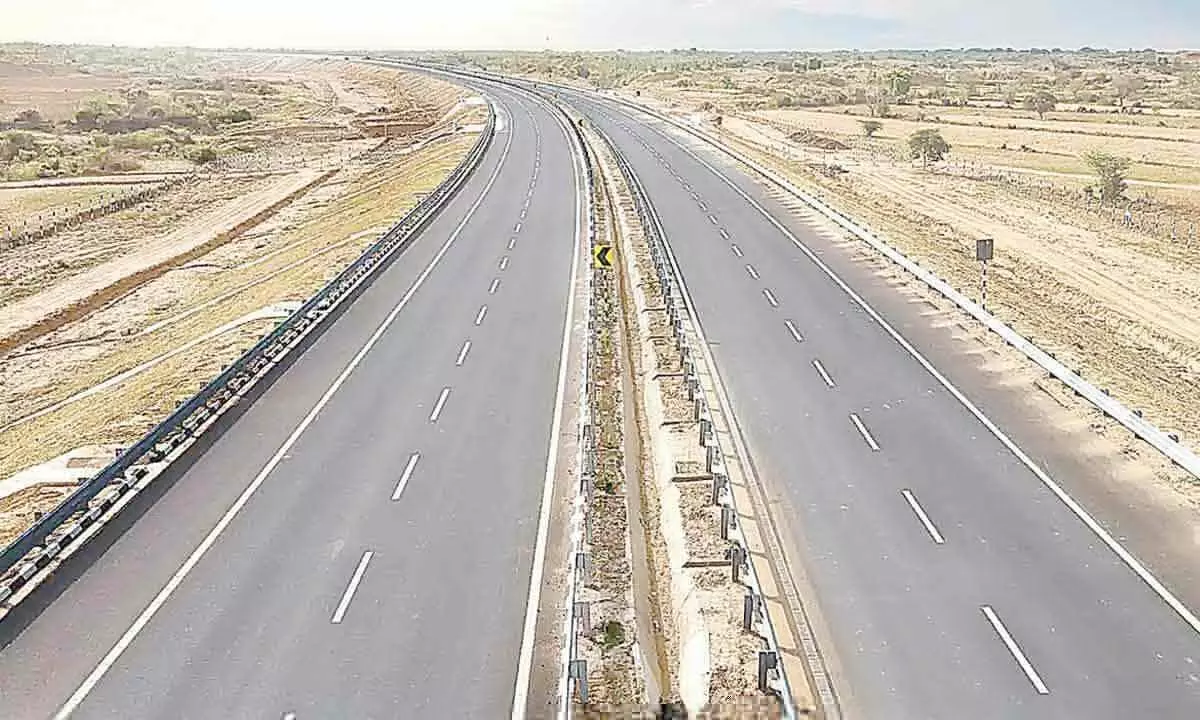Why you should worry for Bharatmala project delay
Having missed the deadline of FY22, this project may take another 10 years to complete, burdening taxpayers
image for illustrative purpose

Bharatmala Pariyojana Programme, one of Narendra Modi's ambitions and much hyped road infrastructure projects, is now threatening to cause nightmare for you and me buying petrol/diesel, using toll roads or paying direct and indirect taxes. In July 2015, nearly a year after Modi became Prime Minister, Bharatmala Pariyojana Project, conceived in the rhythmic tune of Sagarmala and one more mala called Parvatmala was launched with an over ambitious target of construction of 34,800 kms of highway length by FY22.
The project is building highways from States like Maharashtra, Gujarat, Rajasthan, Punjab and Haryana linking Jammu&Kashmir, Himachal Pradesh and Uttarakhand and then connecting border areas of Uttar Pradesh, Bihar, West Bengal and North Eastern States. It has absorbed the Golden Quadrilateral Project, the dream project of late former PM Atal Bihari Vajyapee.
Having missed the deadline this project may take around 10 more years to complete, lingering the pain and burden on taxpayers.
During the last seven years, out of the targeted 34,800 kms only 20,632 kms of highway length have been awarded as of December 2021. Till March 2022, around 23 per cent of the total length has been completed clearly showing the slow pace of execution.
If NHAI manages to award up to 6,500 kms highway length in this fiscal, the awarding may complete in the next fiscal. But in next fiscal, since Modi will be seeking fresh mandate for his third term, the awarding is expected to be further delayed.
National highway projects were hit in the first quarter of this fiscal, as Ministry of Road Transportation and Highways (MoRTH), and the National Highways Authority of India (NHAI) were reportedly slow in awarding projects resulting in a sharp shot fall of 42 per cent to 969 km from the previous year, highway construction was also reportedly down by 14 per cent to 1,966 km as compared to the previous year translating to 22 km per day.
The situation is such that construction of several projects which were awarded last year are yet to start. There has been a constant decline in highway construction from 36.5 kms per day in FY21 to 29 kms per day in FY22 and now, so far, in this year to 22 kms a day.
Minister for Highway Nitin Gadkari, who is credited with the construction of 55 flyovers in Mumbai and the Mumbai-Pune Expressway, the country's first such infrastructure project towards the end of last century, seems to be failing to deliver.
Despite his second term in the same portfolio, his relentless focus on execution and his ability to dictate terms, why is he failing to translate Modi's dream into reality is something that has baffled his admirers.
As per cost escalation figures due to project delay and sharp rise in land acquisition cost, the Bharatmala project is now estimated to cost over Rs10.65 lakh crore, which is 100 per cent higher than the initial estimated cost.
Since commodity prices are on a constant rise, the final project cost could be further escalated by 20 to 25 per cent. While most part of the cost is funded through debt, the rest is met by budgetary allocation and the road cess levied on petrol and diesel.
To give shape to this ambition, the Modi led government had created Central Road Fund, a fund that will never lapse, under Central Road Fund Act 2000 thereby imposing a cess on petrol and diesel to create an unending corpus for this project.
So as long as this project continues there would be no escape from the cess, that has led to elevated prices of petroleum products when one adds other taxes, duties and overall high prices of crude oil.
Though the fuel cess was reduced in May 2022, due to an hue and cry after petrol prices shoot up beyond Rs 100 a litre [it had crossed Rs 123 per litre at one place in Maharashtra in April 2022], it is likely to be restored once the war in Europe subsides.
The cess could also increase depending on what the government wants at a time when the opposition is on the mat. Now the amount of debt is likely to escalate in line with rise in project cost, the government is seen increasing budgetary allocations to reduce exposure to debt. The more the budgetary allocation during the next decade, the more the burden would be on taxpayers.
For example for FY2023 the government had increased the budgetary allocation to NHAI by 106 per cent to Rs. 1.34 lakh crore to reduce its incremental borrowings to zero. The Bharatmala project involves development of 24,800 km of national highways and a residual 10,000 km of highways pending under the erstwhile National Highway Development Program (NHDP) at an estimated cost Rs. 5.35 lakh crore.
As per government data India has about 54.82 lakh km of road network, the second largest in the world in terms of length. National Highways (NHs) constitute about 2 per cent of the total road network, but carry about 40 per cent of the total road traffic.
The Bharatmala project envisages a corridor approach in place of the existing package- based approach which has, in many cases, resulted in skewed development, according to the government.
Once implemented this project is expected to result in connecting 550 districts in the country through National Highway linkages from 300 districts currently. The objective of the project, according to the government, is to optimise the efficiency of freight and passenger movement across the country by bridging critical infrastructure gaps through development of Economic Corridors, Inter Corridors and Feeder Routes, National Corridor Efficiency Improvement, Border and International connectivity roads, Coastal and Port connectivity roads and Green-field express-ways.
(Kalinga Nath is a Mumbai-based senior journalist)

